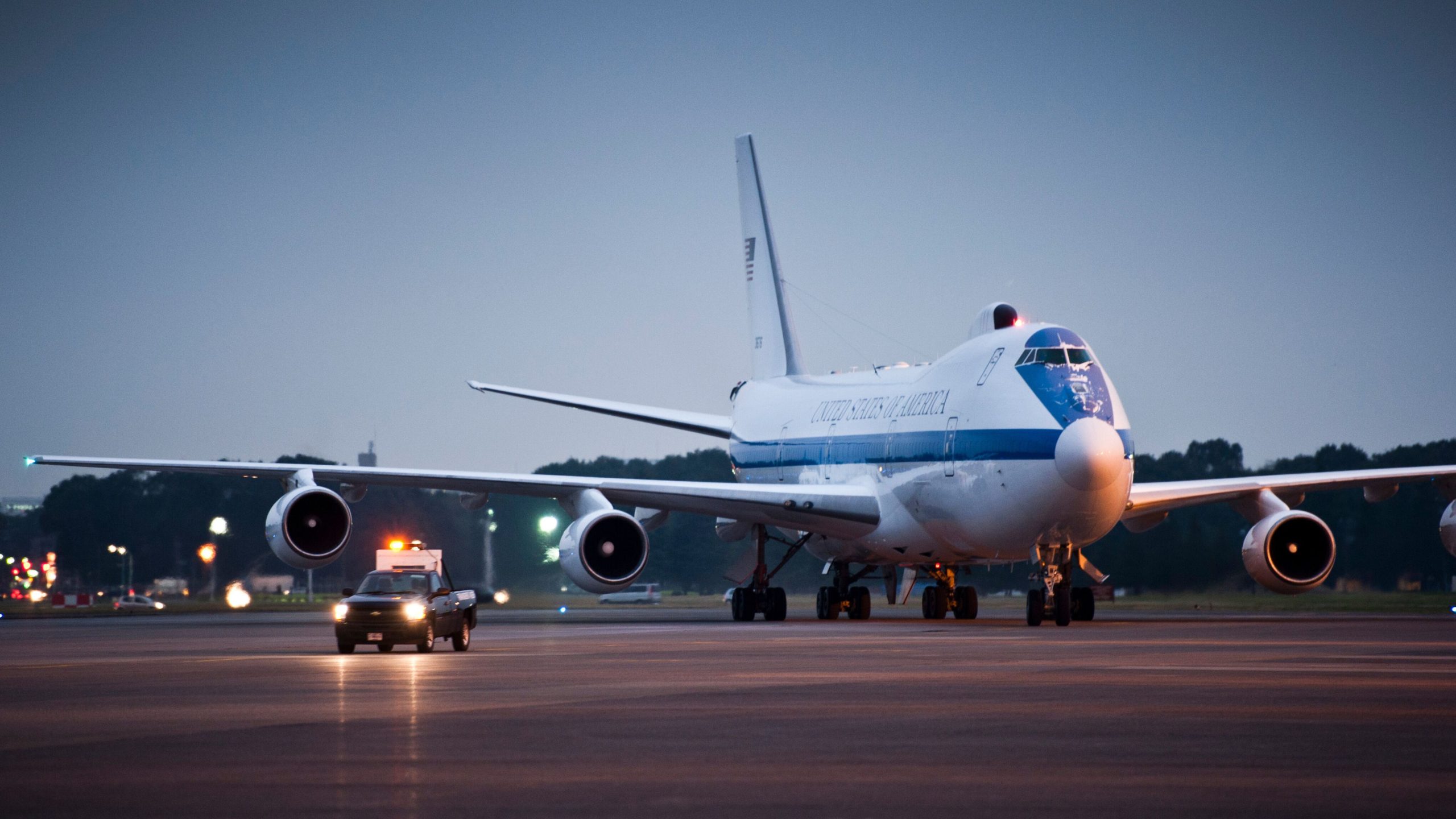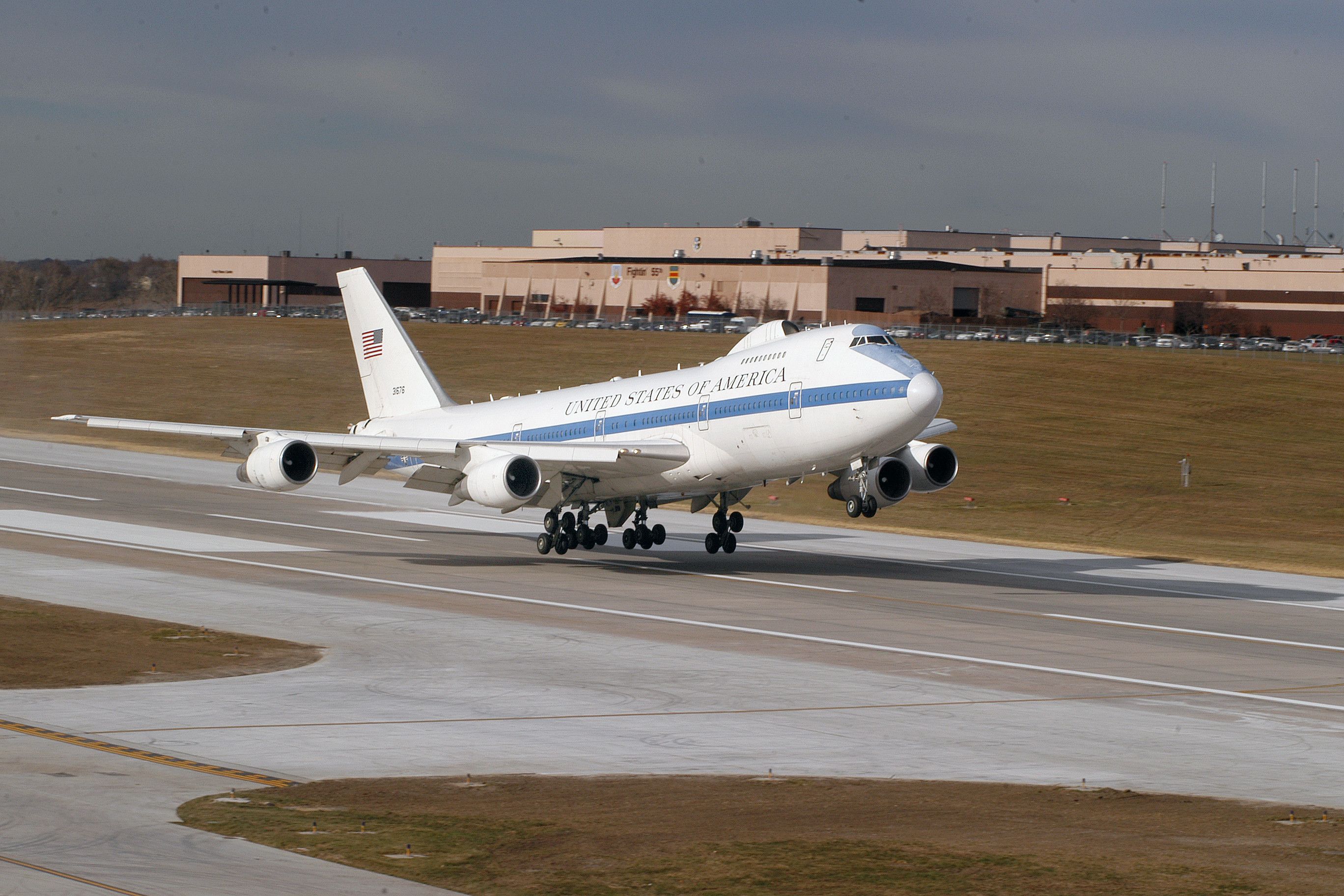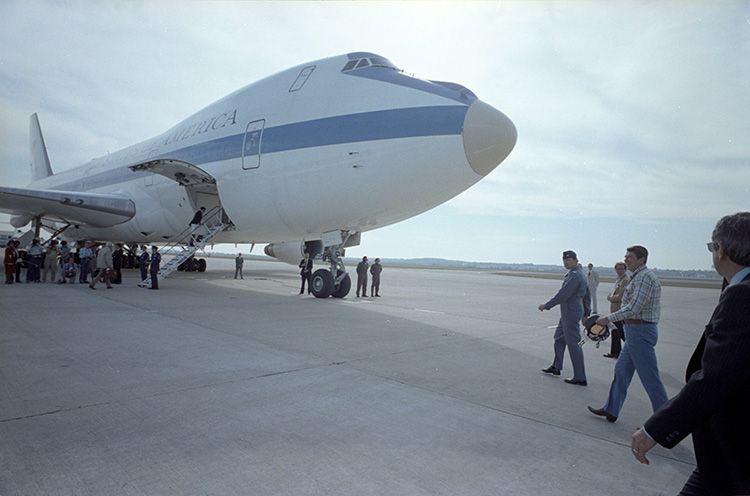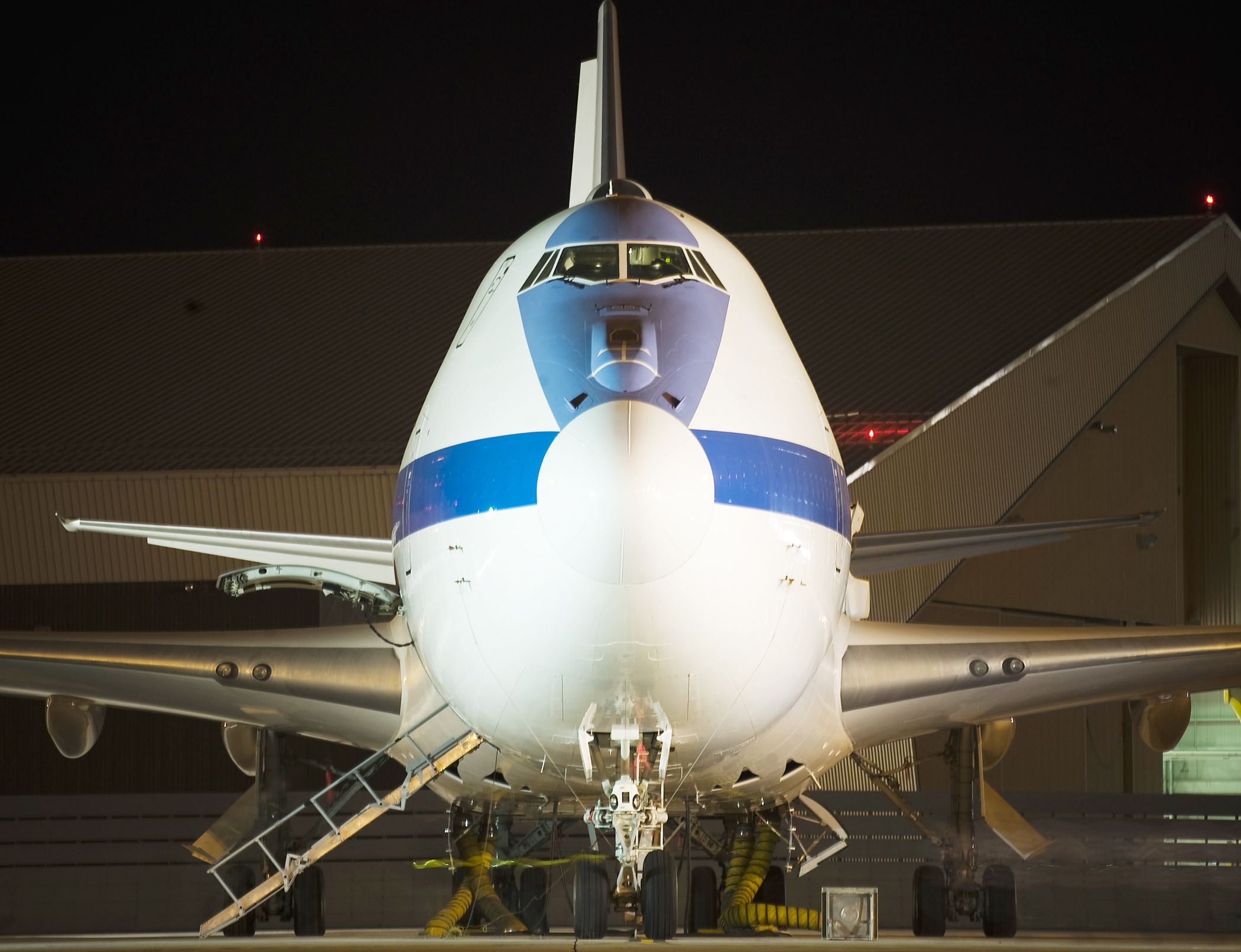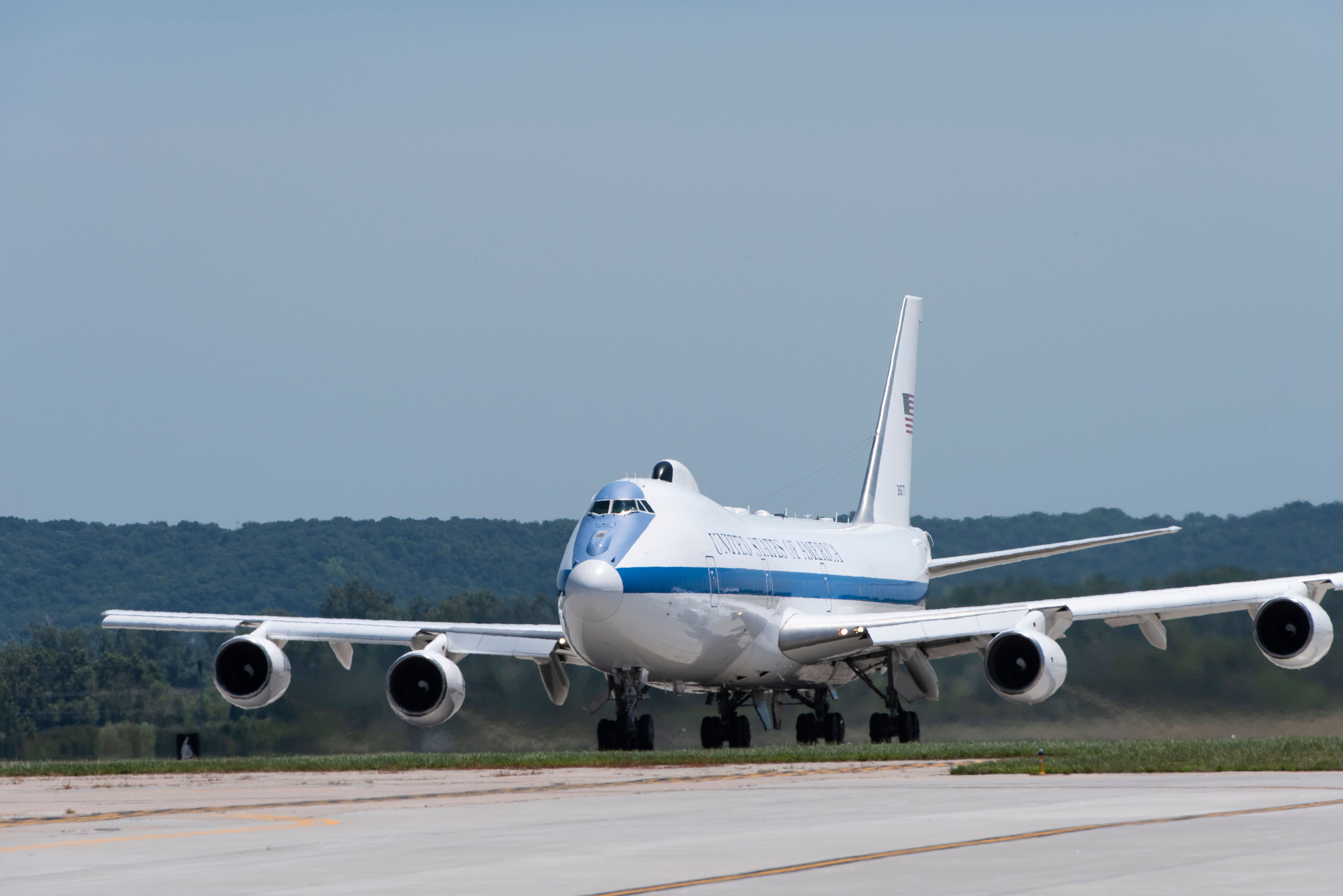Summary
- The United States Air Force’s E-4B Nightwatch fleet are highly specialized aircraft designed for worldwide communication in the event of a catastrophe.
- These planes can carry 112 people, survive a nuclear blast, and refuel in the air.
- The E-4B planes are more technologically advanced than Air Force One and serve as a command center for relief efforts after natural disasters.
The United States Air Force’s E-4B Nightwatch fleet, also known as National Airborne Operations Center or NAOC, are some of the most recognizable aircraft in the sky, given their signature satellite hump. The aircraft are highly specialized to enable worldwide communication even in the event of a catastrophe. The four planes can each carry 112 people, survive a nuclear blast, and refuel while in the air.
What are they?
Known in the military as the E-4B, the planes are a militarized version of the Boeing 747-200 that serves as the National Airborne Operations Center for the President, Secretary of Defense, and Chairman of the Joint Chiefs of Staff. The first was delivered to the Air Force in December 1974 and took over duties from the EC-135J previously in the role. In the years since a team has been on continuous alter to ensure the plane can be airborne within minutes.
The aircraft’s original mission in the late 1970s and 1980s was to ensure a safe location for the President and staff to conduct wartime operations during a nuclear attack. They have been modified with nearly $1 billion worth of work to function as a communications and command hub in a national emergency or destruction of ground command and control centers. The aircraft are even reportedly more technologically advanced than the two Boeing 747s currently being used primarily as Air Force One.
Photo: US Air Force
In peacetime, the planes support the Federal Emergency Management Agency to provide communications and command center capability to relief efforts following natural disasters, such as hurricanes and earthquakes.
How do they work?
The signature hump on top of the aircraft contains various tools to enable communication between any person or device worldwide. While the exact capabilities are classified, several confirmed features exist, including a high-frequency antenna and satellite connectivity.
This hump, on top of the plane’s fuselage, allows those onboard to communicate directly with the military’s Milstar network of satellites. All branches of service use it for secure, jam-resistant, worldwide communications between a wide variety of resources, including ships, submarines, aircraft, and ground stations. It is also designed to be operated independently of any gound-based locations, hence the nickname doomsday plane.
Photo: US Air Force
The aircraft further contains a low-frequency antenna that can dangle up to five miles behind the aircraft while in flight. Matrix-style shielding defenses also protect the sensitive systems in case of an electromagnetic pulse (EMP) attack.
Who flies them?
The US Air Force has four E-4s in its inventory, which collectively fly more than 50 overseas missions, including stops in over 25 countries, each year. One of the most significant missions is to provide travel support for the Secretary of Defense and Joint Chiefs of Staff when traveling overseas. The plane’s highly secure communications suite, operational capability, and strong defensive capabilities make it ideal for overseas travel.
Photo: Ronald Reagan Presidential Library
It is increasingly rare for US Presidents to fly on them. The last President confirmed to have used the aircraft was Ronald Reagan.
The planes accommodate up to 112 people, including the command team and accompanying staff. The plane is crewed by military professionals across 15 different specialties, including pilots, navigators, flight engineers, aircraft maintainers, flight attendants, communication officers, data and radio operators, security forces, and technical controllers.
Photo: US Air Force
In order to fulfill their mission of providing direct support to the President, the Secretary of Defense, and the Joint Chiefs, at least one E-4B is always on 24-hour alert, along with a global watch team at one of many designated bases worldwide. The location of each aircraft is often guarded with much secrecy, with the exception of the one permanently stationed in Nebraska, the only model for which media has been allowed access.
What is inside?
The main deck is divided into six functional areas:
- A command work area
- A conference room
- A briefing room
- An operations team work area
- A communications area
- A crew rest area
The nose of the aircraft features the VIP command suite, complete with stations for security guards. Generally used by the Secretary of Defence, the suite features a bunk, desk, several chairs, and video screens. In his absence, it is used by other senior officials.
Above this compartment is the crew rest area. The section hosts maintenance and flight crew and features the Queen of the Skies’ iconic spiral staircase. Upstairs are workstations and several bunks for long flights. The aircraft can fly for over 10 hours but can be refueled in the air for extended missions. Refueling the aircraft to capacity requires two fully loaded KC-135 tankers.
Further down the fuselage is the conference room, which is soundproofed and equipped with encrypted video conferencing technology. Directly past this is the briefing room, used for members of the press who occasionally accompany leaders on visits. This can also be used for up to 18 battle staff members.
The central area of the widebody aircraft is designated as the “Battle Staff Area.” It features 27 workstations complete with desks, satellite phones, and all the systems necessary to manage high-level commands from aloft. The room is designed to serve as a flying office for officers from across military and civil areas of experience, including infrastructure, to consolidate the experts close to the command center.
Photo: US Air Force
Next up is the communication and technical control module. This area is staffed with 25 people for round-the-clock operations, including engineers, support crew, and technical staff. There is even a special radio compartment with sides for general and top-secret communications. At the rear of the aircraft is another crew rest area that contains a mixture of seats and bunk beds.
Photo: US Air Force
There is currently a replacement in the early stages of development dubbed the Survivable Airborne Operations Center. The four Beoing 747s are well beyond their expected service lives and are due for a replacement this decade.

